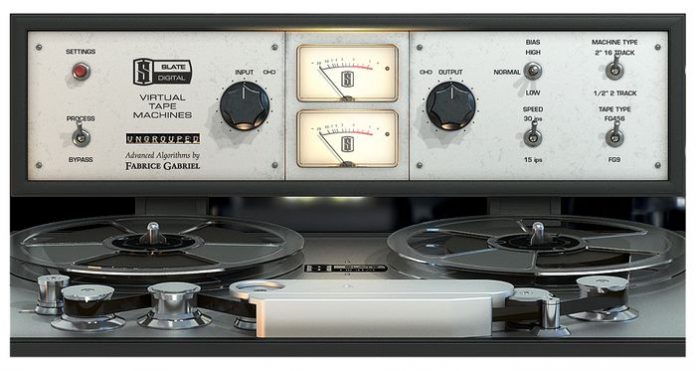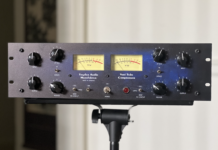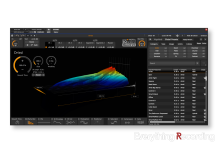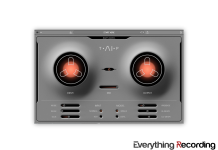This holiday season, why not give the gift of warmth to someone with a cold heart (DAW). I had a chance to get my hands on this analog tape modeling plugin to see for myself just how great it is. So far I haven’t read a bad thing about, which really makes me want to find something wrong here. Lets see if I can.
I didn’t really come into the recording world until I was about 15, when the Alesis ADAT was the hot item to have. Needless to say I don’t have much experience with analog tape. I have, however, had to learn a good bit about it during schooling. Given all of the training I’ve had on it, it is safe to say that the characteristic sound we have all come to know and love is a complicated one to mimic. This is mainly due in part to the sheer maze of signal flow these machines had to be routed through just to get the signal in and back out without completely destroying the integrity of whatever was being recorded. Every single link in this chain is a necessary part of the soul of the sound. So when Slate Digital tasked Fabrice Gabriel with creating the algorithms, he was sending him into a warzone of electrical current and magnetic fields, armed only with binary. To add more to the situation, it was stated that unless the product was completely indistinguishable from the hardware version, it will never see the light of day. Well…. it’s here.
So what do we have in front of us? We have very few controls, a sleek interface, two different tape machine emulations, two different tape types, and two different tape speeds. That’s about it. At first site, you’re probably thinking that the lack of control means lack of usefulness because if the plugin world has shown us anything, it’s preached the more controls the better. Right? Wrong. That fallacy right there has taken some great virtual processing and made it a convoluted mess of dials that only make you not want to reach for that particular plugin due to the amount of buttons. The other side to that coin is that in holding most of the cards, a company is pinning you into a corner with the usefulness of the effect. You’re stuck with a one trick pony. I am proud to tell you that Slate Digital didn’t do this.
Just because the controls are few and far between doesn’t mean that the versatility isn’t there. Slate Digital modeled the two types of tape machines after NRG’s 2 inch 16 Track Studer and the legendary Howie Weinberg’s 1/2 inch A80 RC machine. Basically you get the best of both worlds, a mastering deck as well as one used primarily in tracking. You also get two types of tape. The switch labeled FG456 is based on the old Ampex 456 tape and gives you that classy warmer sound, where are the FG9 is a more modern sound based on the GP 9 tape. Throw in 15 and 30 i.p.s settings and you can mix and match to get exactly what you’re needing for any given track.
There isn’t a single track I haven’t put this plugin on that it hasn’t just instantly made it sound better. It’s not an obvious in your face change, but you can definitely tell something has changed for the better. There is an instance sense of depth and soul to the track. It’s almost magic. Since I’ve started using it, I throw it on the stereo bus instantly and usually use the half inch A80 at 15 i.p.s with FG9 tape. This gives you the low end response of the 15 i.p.s while allowing a little more headroom and top end in with the FG9. The FG9 seems to be able to take more SPL before saturating too much, thus giving you more to play with in those master busses. For most individual tracks, I use almost the exact opposite settings. The 30 i.p.s with 456 tape gives you a full bodied sound with a little more warmth. This combo gives you this nice yin and yang feeling. Drums especially love this plugin as you can just place VTM in the drum bus and without tweaking, you can instantly hear a more well rounded beefy sound that doesn’t crowd up the mix.
Slate also gives you a bit to play with under the hood. The settings button will give you a few more tools from dialing the bass response, to adding more wow and flutter. You can even use a gate like auto mute for tracks when using 15 i.p.s and the hiss is showing up a bit too much. The grouping works especially well when you are using VTM on several tracks and want universal control over each instantiation. You simply place each in the same group and any control change will change all of the tracks in the group. No more hunting and picking!
This plugin is as near perfection as one could get. It definitely is one of the most characteristic, yet subtle plugins I’ve ever used. I’ve used Magnetic, Reel Tape Suite, Waves MPX and many more plug-ins and all they ever seem to do is make the track sound like an EQ boost was made with a little compression. VTM goes down to the bare bones of audio and pulls exactly what is needed to get life out of each track you place in the mix. Processing this much info in a singular plugin can give latency issues and if you’re wanting to run it across several tracks in Pro Tools MAKE SURE you have delay compensation on or it will lag pretty bad. Other than that there honestly is no gripes on my end. I really wish I could’ve found something wrong with it simply because no other review out there has either. I’m sold. Let’s all face it. Digital is like clear glass, you look in everything is extremely sharp and crisp. So why not add some audio “window tinting” and make your world of audio sound just a little more cool.
This plugin comes in VST, RTAS, AU (And I’ve heard an AAX coding is in the works.
For more info, click HERE.
Be the first to leave a review.














